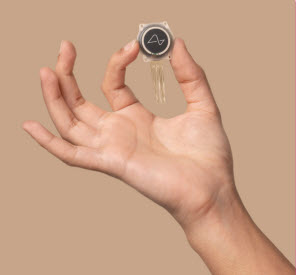We last discussed some aspects of the legal implications of human brain linking to external brain device in our article “Naavi’s theory of neuro Rights”

In a significant development announced today, Elon Musk’s Neurolink has obtained FDA approval and implanted a chip in a human. This is considered as the first human trial to test implants.
The study will assess the functionality of the interface, which enables people with quadriplegia, or paralysis of all four limbs, to control devices with their thoughts
This article in Neuralink state that the study nick named PRIME (Precise Robotically Implanted Brain-Computer Interface) study aims to evaluate the safety of Neuralink’s implant (N1) a nd surgical robot (R1) and assess the initial functionality of its Brain Computer Interface for enabling people with paralysis to control external devices with their thoughts.
Under the study, company is recruiting patients with “Quadriplegia” condition (Limited function in all four limbs) for a six year period interaction involving monitoring of the patients.
Once surgically placed, the N1 Implant is cosmetically invisible. It records and transmits brain activity with the goal of enabling you to control a computer. The Implant records neural activity through 1024 electrodes distributed across 64 threads, each thinner than a human hair. It should help the patients to control external devices through transmission of their thoughts.
The objectives of the study are noble and it is a significant development in the human medical research.
In the context of Cyber Laws, it is however necessary to flag that while the thoughts can enable an external computing device to be activated, whether such ability can enable a person without the need for such implant to be able to hack into computers in the vicinity through thoughts.
The patient with an ability to interact with an external computing device through a chip implanted within his body is by definition a “Cyborg”. While there are “Necessary Cyborg implants” for patients with paralysis to which this FDA approval relates to, the possibility of the implant being used for other purposes in due course including manipulating the thoughts of the patients or thoughts of an otherwise healthy individual cannot be ruled out.
Hence we need to look at the risks and accordingly formulate the policies for use of such devices.
Some thoughts that comes to my mind now is that …
All Cyborgs need to
a) be transparent to disclose that they are Cyborgs with some extra human capabilities. In other words, the fact that a human has an implant inside should be disclosed through a note on the face of the person. It should not be “Cosmetically hidden”.
b) made to sign a legally binding declaration to the community that they shall not misuse the implant.
c) agree for an audit of the activity of the implant at periodical intervals from a neutral body.
d) be automatically disqualified of entering into contracts such as disposal of their properties since they donot have full control on their thoughts.
e) Such Cyborgs may be “Intelligent” but donot have a “Free Will”. Hence they cannot enter into valid contracts under Indian Contract Act or similar laws.
Let us call these “Naavi’s Principles of Cyborg regulation” which can be expanded further. Obviously these thoughts do clash with some principles of “Human Rights”. But Cyborgs must consider themselves as not strictly “Human”.
Naavi
P.S: Kindly excuse me if I sound in-human since we are in the Neuralink case discussing about people with unfortunate disabilities and have actually lost some human capabilities which are being restored through this device. But just as a doctor discusses the probability of death before undertaking surgery with the patient and takes his consent for surgery, we need to recognize that while number of deserving persons benefit out of technology there will be odd persons who will misuse them. If we donot have regulations since the majority donot need them, the minority will become terrorists and bring disrepute to the technology itself. Hence regulation is essential.
Naavi

